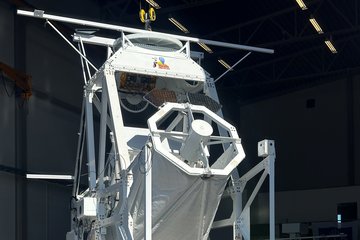All genres
1.
Journal Article
Quenching of zonal winds in Jupiter's interior. PROCEEDINGS OF THE NATIONAL ACADEMY OF SCIENCES OF THE UNITED STATES OF AMERICA (25) (2024)
2.
Journal Article
Direct driving of simulated planetary jets by upscale energy transfer. Astronomy and Astrophysics 670, p. A15 (2023)
3.
Journal Article
Zonal winds in the gas planets driven by convection above a stably stratified layer. Monthly Notices of the Royal Astronomical Society 517 (4), pp. 5584 - 5593 (2022)
4.
Journal Article
Linking zonal winds and gravity – II. Explaining the equatorially antisymmetric gravity moments of Jupiter. Monthly Notices of the Royal Astronomical Society 505 (3), pp. 3177 - 3191 (2021)
5.
Journal Article
Linking zonal winds and gravity: the relative importance of dynamic self-gravity. Monthly Notices of the Royal Astronomical Society 492 (3), pp. 3364 - 3374 (2020)











